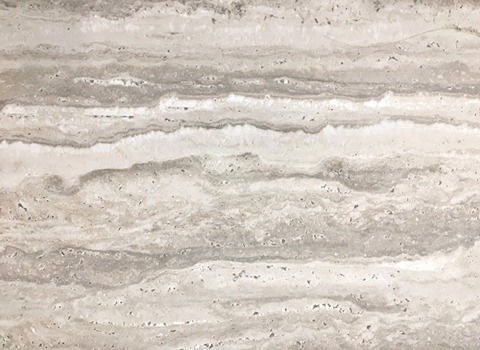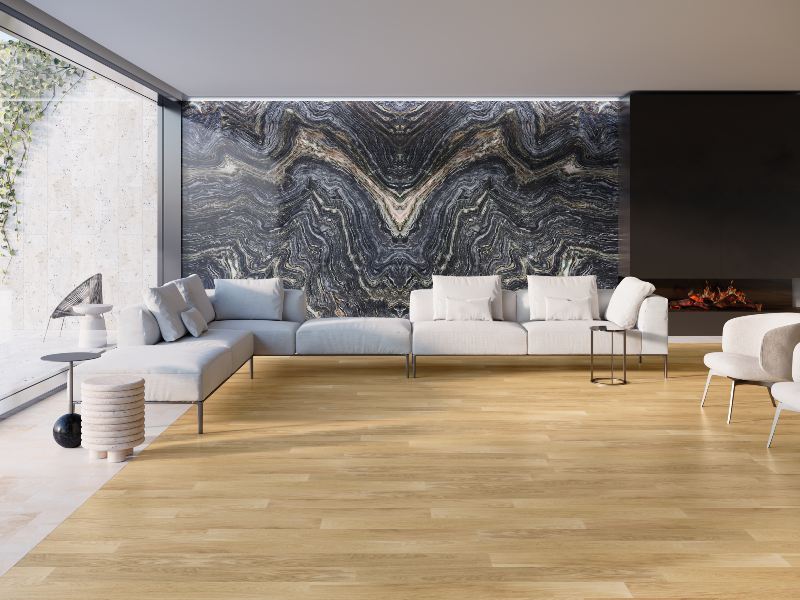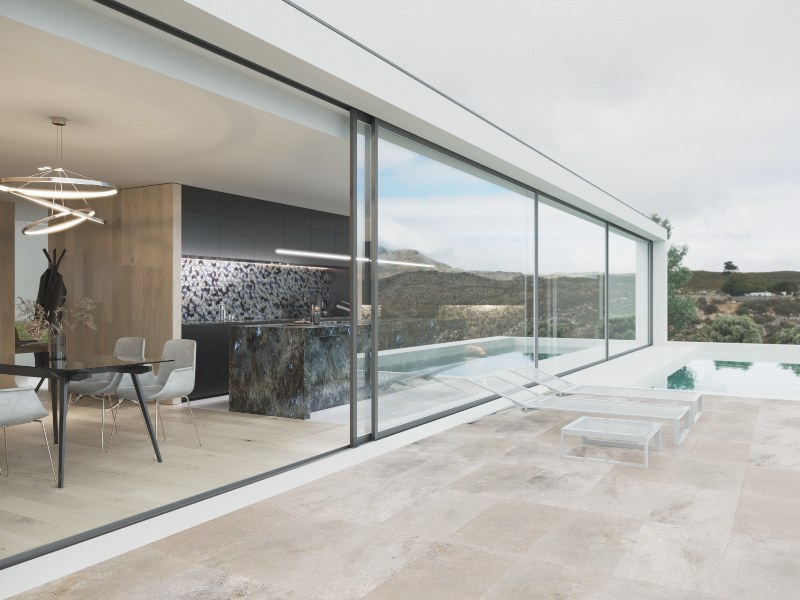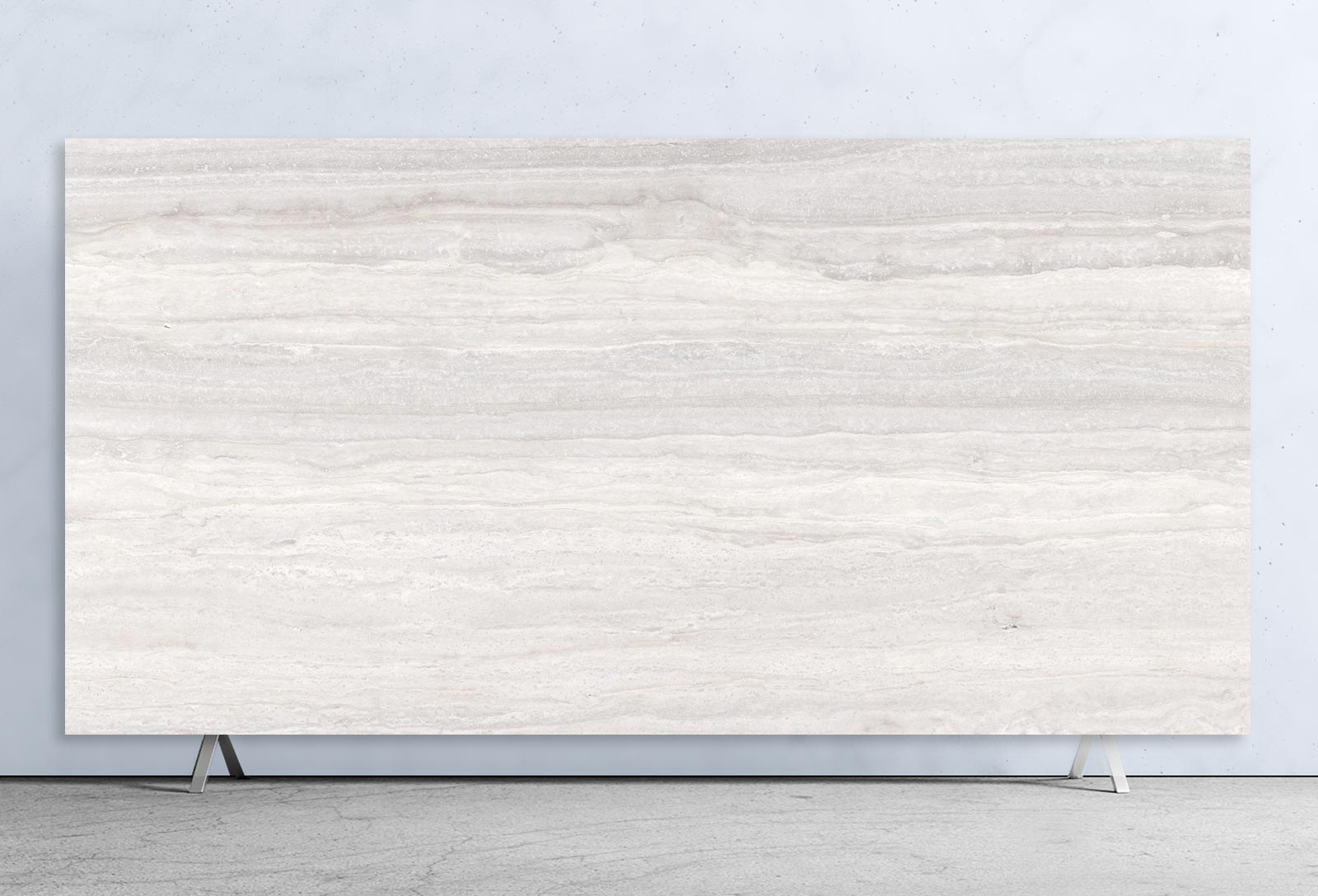Explore the beauty and versatility of travertine stone (slabs & tiles) at IWC Stone. Learn about its formation, types, and advantages, from interior floors and countertops to durable outdoor applications. Discover expert tips on pricing, maintenance, and choosing the right travertine for your project. Shop our premium selection of high-quality travertine slabs and tiles today!
Travertine stone is a versatile and popular building material known for its unique appearance and durability. This article explores the various aspects of travertine stone, including its formation, types, uses, and benefits, while adhering to SEO principles to enhance its visibility online.
Travertine is a type of sedimentary rock that falls under the category of limestone. It forms from mineral springs, particularly those associated with hot springs or caves, where the mineral-laden water slowly precipitates out calcium carbonate (CaCO₃). Over time, this precipitation builds up, creating layers of mineral deposits, which become compressed into the stone we know as travertine.
The unique fibrous or concentric texture of travertine is due to the porosity (small holes or voids) in the rock. This is caused by the presence of gas bubbles that were trapped during the precipitation process. These voids contribute to travertine’s aesthetic appeal but also affect its durability and care requirements.
Composition:
Travertine is typically cut into tiles or slabs for use in construction, particularly in flooring, countertops, walls, and outdoor applications.

The price of travertine stone can vary widely, influenced by factors such as:
Quality: High-quality travertine, often referred to as premium or select, tends to have fewer visible voids or inconsistencies, with smoother textures. Lower-quality travertine may contain more pitting and irregularities, reducing its price.
Color and Pattern: Unique colors or patterns often fetch higher prices. For example, travertine in rare shades, like deep reds, greens, or purples, may cost more than common beige or cream varieties.
Origin: Travertine is quarried in several regions around the world, including Italy, Turkey, and Iran. Travertine from prestigious quarries, such as those in Italy, may carry a premium price tag due to the higher perceived value and historical significance.
Finishing: Travertine can be honed (smooth but not glossy), polished (highly glossy), or tumbled (which gives it a more rustic, matte appearance). Each finishing process affects both the price and appearance of the stone.
Size: Larger slabs or tiles generally cost more than smaller ones. Custom cuts or specialized shapes may also raise the price.
Average Price Range: As of recent data, travertine tiles typically range from 3to3to15 per square foot, while slabs can range from 50to50to150 per square foot depending on the above factors.
A travertine slab is a large, solid piece of stone cut directly from the quarry. The thickness of these slabs typically ranges from 2cm (3/4″) to 3cm (1.25″). They are used primarily in applications where a continuous, seamless surface is desired, such as:

Advantages of Slabs:
Travertine is an excellent choice for exterior walls for several reasons:
Durability: As a natural stone, travertine is very durable and can withstand a variety of environmental conditions, including high humidity, extreme temperatures, and heavy rainfall. This makes it a great option for facades, exterior cladding, or even decorative walls around the exterior of buildings.
Thermal Insulation: Travertine can help with thermal insulation, meaning it can help regulate temperature within a building. Its porous nature allows it to absorb and release heat, contributing to energy efficiency.
Aesthetic Appeal: The natural colors and patterns of travertine make it an attractive option for exterior applications, enhancing the overall curb appeal of a home or building. The stone’s colors can range from light neutrals to warm earth tones, giving it a classic and timeless look.
Low Maintenance: While the stone does need to be sealed to prevent staining and to maintain its appearance, it requires relatively low maintenance compared to other materials like wood or metal, which may corrode or fade over time.
Travertine is indeed an excellent choice for outdoor applications such as:
Advantages for Outdoor Use:
Slip Resistance: Travertine is naturally slip-resistant, especially in its honed or tumbled forms. This is important for areas exposed to water or wet conditions, such as around pools or in outdoor showers.
Cool Underfoot: Despite its porous nature, travertine tends to remain cooler underfoot compared to other stones, like granite or marble. This is a significant benefit in sunny areas where you might walk barefoot on an outdoor patio or pool deck.
Weather Resistance: Travertine is a highly weather-resistant material, withstanding both high heat and cold temperatures. It is not prone to cracking or warping under temperature fluctuations, making it ideal for regions with diverse climates.
Low Maintenance: Like its use in exterior walls, travertine used outdoors is relatively easy to maintain. A good sealant will help prevent dirt, oils, and moisture from damaging the stone.

Considerations for Outdoor Use:
Aesthetic Appeal: The most obvious advantage is the natural beauty of travertine. Its variety of colors, textures, and patterns provides a unique, timeless quality that appeals to both modern and traditional tastes.
Durability: As a natural stone, travertine is tough and resistant to wear, scratches, and heat, which is why it’s widely used in high-traffic areas.
Variety of Uses: Travertine is versatile enough to be used for both interior and exterior applications, whether you need it for floors, countertops, walls, or landscaping.
Eco-friendly: Being a natural stone, travertine has a lower environmental impact compared to synthetic materials like porcelain or certain types of tile. It’s also recyclable.
Porosity: Travertine’s porous nature means it can absorb liquids and stains if not properly sealed, making it more vulnerable to damage. This requires careful maintenance to ensure longevity.
Regular Maintenance: Unlike materials like granite or quartz, travertine requires periodic sealing to preserve its surface and prevent staining.
Cost: While generally affordable compared to other stones like marble or onyx, high-quality or rare varieties of travertine can still be relatively expensive.
Travertine comes in a wide range of colors and types, including:
Classic Travertine:
Features earthy tones like beige travertine, cream travertine , and light browns. It has a neutral, timeless appearance, perfect for classic and Mediterranean-style homes.
Silver Travertine:
Silver travertine Ranges from light gray to dark charcoal, offering a sleek, modern look. Silver travertine is a good fit for contemporary designs or urban environments.
Red Travertine:
Known for its warm reddish hues, this type adds a rustic and natural element to spaces. It can also bring out a cozy feel in interiors or outdoor areas.
Walnut Travertine:
A warm, deep brown tone that provides a rich, earthy aesthetic. Walnut travertine pairs well with rustic and traditional styles.
These color variations come from different mineral impurities present during the formation of the stone. Choosing the right color can dramatically affect the look and feel of a space.

Travertine stone is a versatile and durable material that offers a range of benefits for both indoor and outdoor applications. Its natural beauty and unique characteristics make it a popular choice for homeowners and designers alike. When considering travertine for your next project, be sure to explore the various types and colors available to find the perfect match for your aesthetic and functional needs.
For more information on travertine stone and to explore a wide selection of high-quality options, visit IWC Stone. Our website offers a comprehensive range of travertine products to suit any project, ensuring you find the perfect stone for your needs.
As you conclude your research on natural stone, we invite you to explore our wide selection of high-quality travertine and marble options. Whether you’re designing a modern space or looking for something more classic, IWC Stone has the perfect stone for your project. From the warm tones of Cream Travertine to the bold sophistication of Black Travertine, each stone has been carefully selected for its unique beauty and durability.
For those seeking a timeless appearance, White Travertine offers a refined look that never goes out of style, while Silver Ice Travertine provides a contemporary, cool finish perfect for modern designs. If you’re after something with a subtle smoky effect, the Silver Travertine could be just what you’re looking for. Finally, the soft, neutral tones of Beige Travertine bring warmth and elegance to any space.
At IWC Stone, we strive to offer exceptional quality and customer satisfaction, helping you find the perfect natural stone for your next renovation, construction, or design project.
High quality in processing
The best prices
Shipping nationwide
24 hour support
It is our mission to produce and provide building stone with the best quality and competitive price in the country.

